This review avoids major spoilers, though it may contain some mild ones.
You don’t have to be an expert swordsperson to enjoy Fence, a highly anticipated new series from Boom! Studios. Written by Captive Prince author C.S. Pacat and illustrated by fan-favorite artist Johanna The Mad, Fence is a teen soap opera set in the world of competitive fencing.
Our 16-year-old protagonist Nicholas Cox is the underdog from the start. He’s a kid with barely enough money to register for a local tournament; when he does, he’s a late entrant. He’s got a solid work ethic but without professional-level coaching, he’s out of his league as stoic Seiji Katayama swiftly wallops him in his first competition.
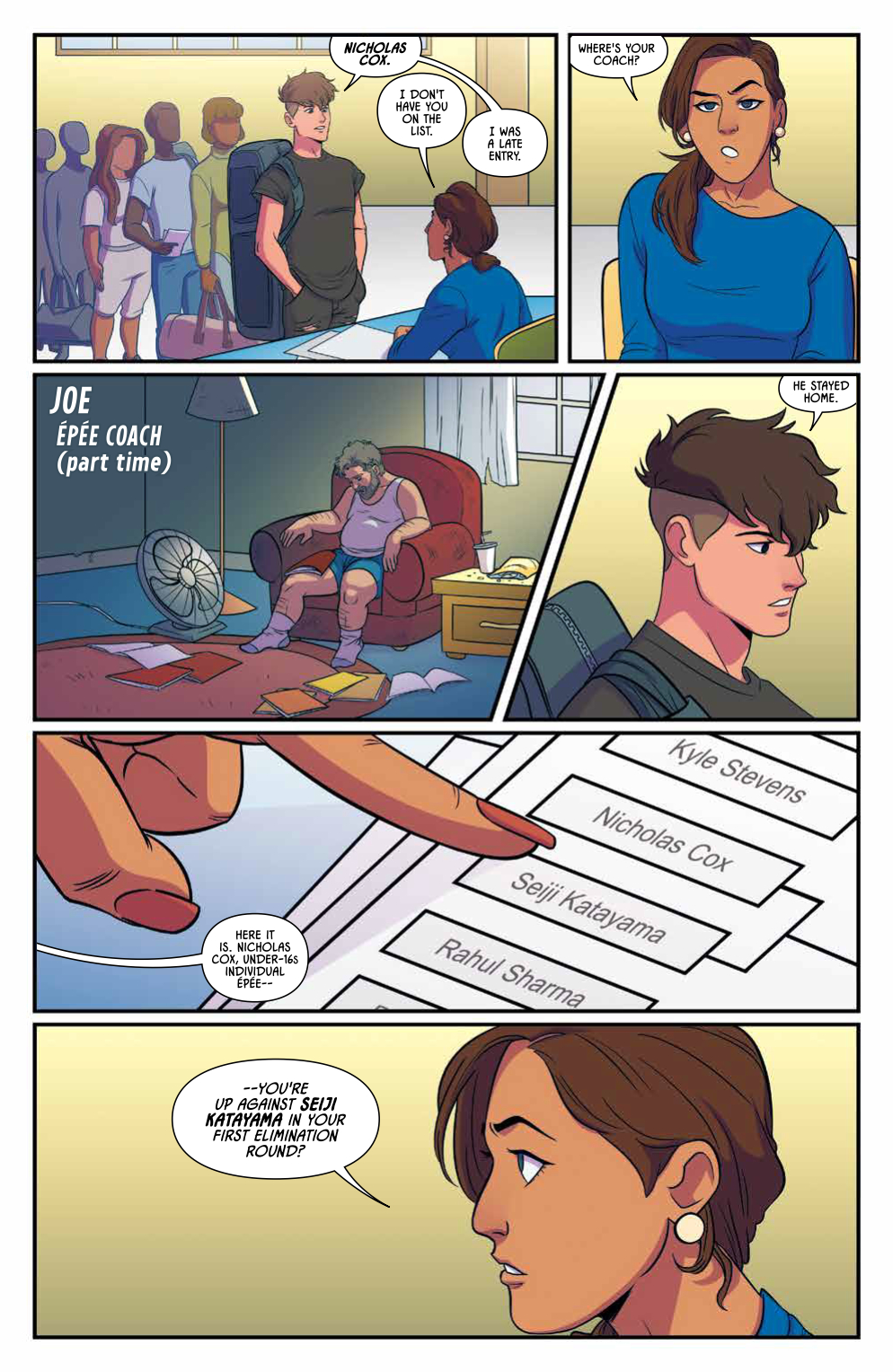
Nicholas arrives for his competition and is immediately out of place.
Nicholas is an easy character to root for, but a few well-placed lines about his family history and his life before fencing hint that there’s more to him than just his sporting goals.
All the signature tenants of a sports story are there: the determined hero, the aloof reigning champion, the unfriendly mid-tier competitors. But there are enough twists to keep the familiar genre fresh, the biggest of which comes right at the end of this installment. I won’t spoil it, but it’s a fantastic setup for any combination of the “intense rivalries, lifelong friendships, and the thrill of romance between teammates” that were promised when Fence was first announced.
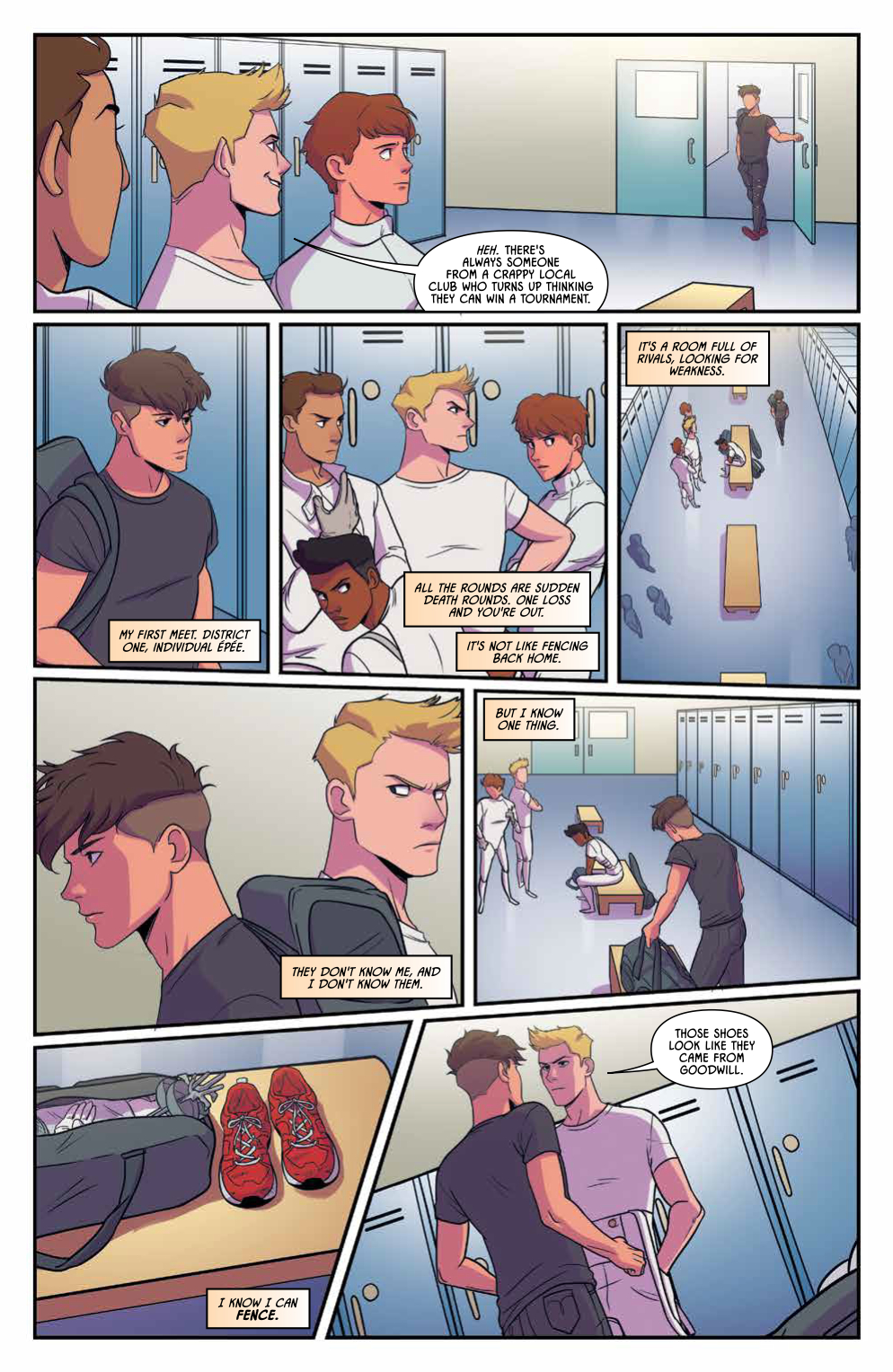
The other fencers don’t take too kindly to the new kid on the circuit.
Among the series’ other promises are a diverse cast and an “exuberantly queer” story. I’m delighted to see characters of colour, particularly an East Asian main character. Perhaps my only problem with the illustrations is that the characters’ face shapes are a tad too similar. Nonetheless, the characters clearly come from a range of backgrounds.
As a queer East Asian fencer myself, it’s refreshing to read a story about confirmed LGBT and ethnically diverse characters rather than having to settle for characters who are only coded that way. I’m most excited to see how the rest of the series handles these underexplored perspectives.
The central theme of this book is challenge, and not just because there’s a tournament going on. The comic invites the readers to challenge the book itself, as the writing makes claims about activities and people whose reputation precedes them.
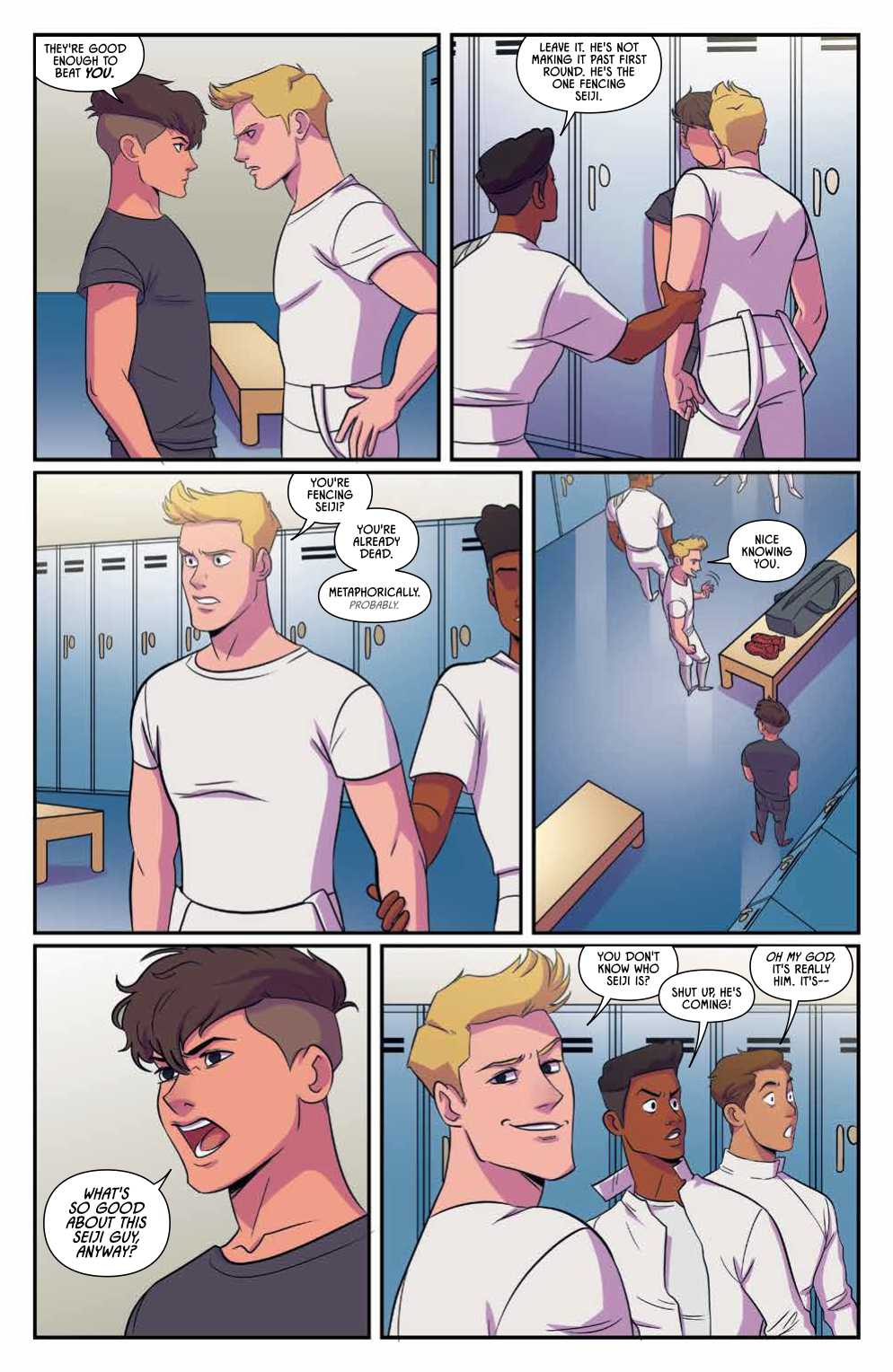 Seiji hasn’t lost a match all year.
Seiji hasn’t lost a match all year.
And wow, does the book prove it. The opening lines talk a big game about the speed and excitement of fencing, whetting the reader’s appetite for visual proof. Seiji’s first attack breaks the border and he charges out of the panel before we see that the match has even started. We hear about Seiji’s prowess and that comes through with a splash of Seiji walking away from a pile of his defeated opponents, littering the piste like corpses on a battlefield.
It’s very much a first issue with more exposition than plot, but this is arguably necessary. And when the exposition is as visually stunning as in Fence, I’m hardly complaining. Technical fencing terms like parry and riposte replace the usual pow and sock of comic action sequences, a fun way to teach readers the vocabulary of fencing. The same thing goes for the flashbacks of Nicholas’ early coaching sessions; they show the reader the skills and discipline needed to be a good fencer.
The realism of the comic was a definite highlight. Pacat’s firsthand experience as a fencer shines in every action sequence. I’ve seen far too many productions of Hamlet where I’ve leaned over to a friend and whispered angrily “that’s not allowed in real fencing!” I know that stage fighting is very different from competitive fencing but that difference shouldn’t mean that dramatic action should come at the expense of accuracy, or vice versa.
The details and language of the fight scenes made me stop reading for a moment, close my eyes, lean back in my chair, stretch my arms out, and breathe a quiet “yes!” because finally, finally there’s a portrayal of fencing that shows it as both a sport and an art.
As a side note on the realism: I love that Nicholas is left-handed. I’ve encountered many a tricky lefty fencer in my time and it’s still very much a topic of discussion in fencing communities. Seeing the same discussion in the comic made me smile and took me back to my old fencing club.
Fence is a delight and a fantastic debut comic by both Pacat and Johanna. I’m definitely prêt for the next issue.
Fence #1 hits stands on November 15. Until then, check out these beautiful variant covers.
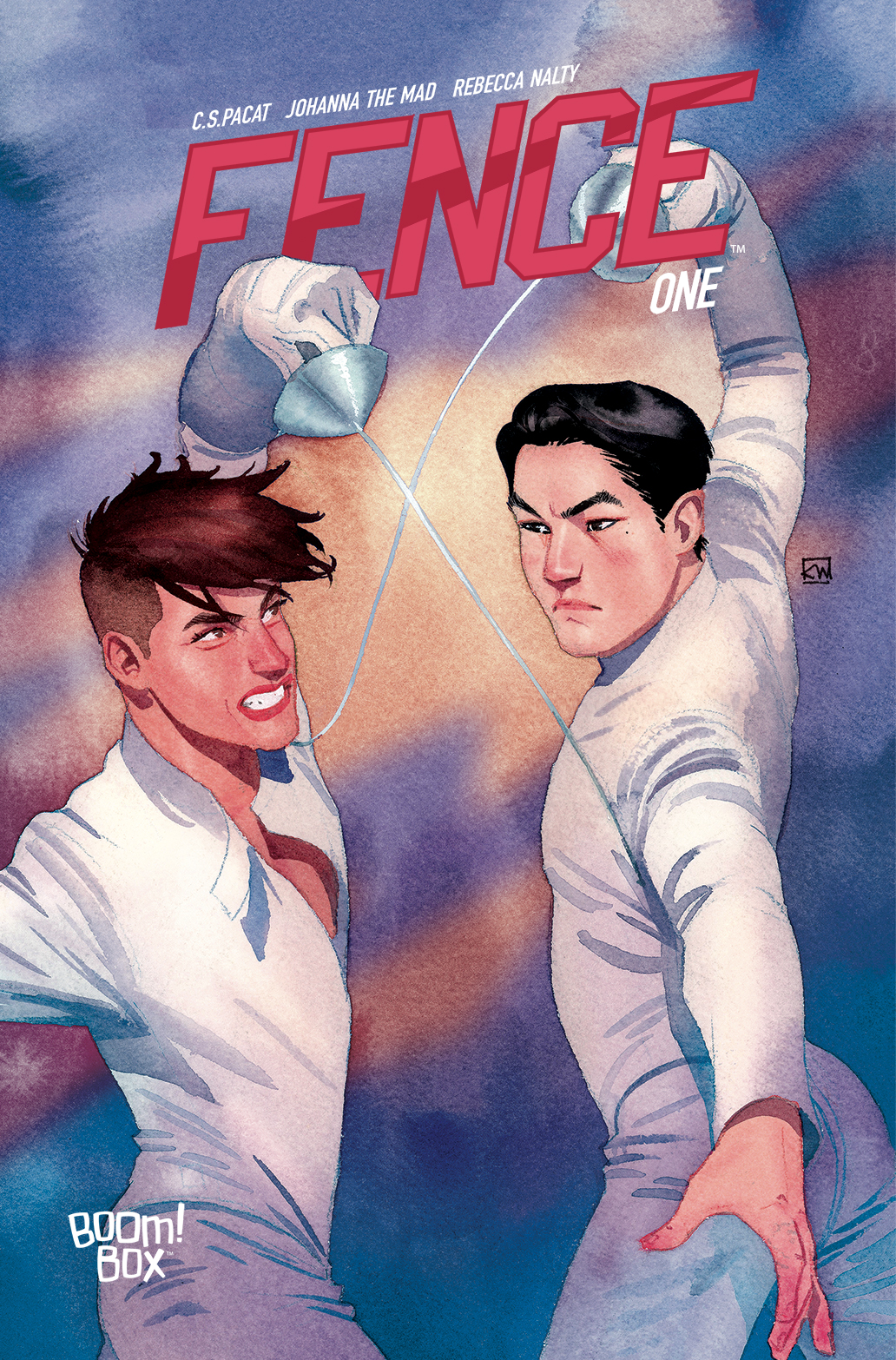
Fence #1 variant cover by Kevin Wada
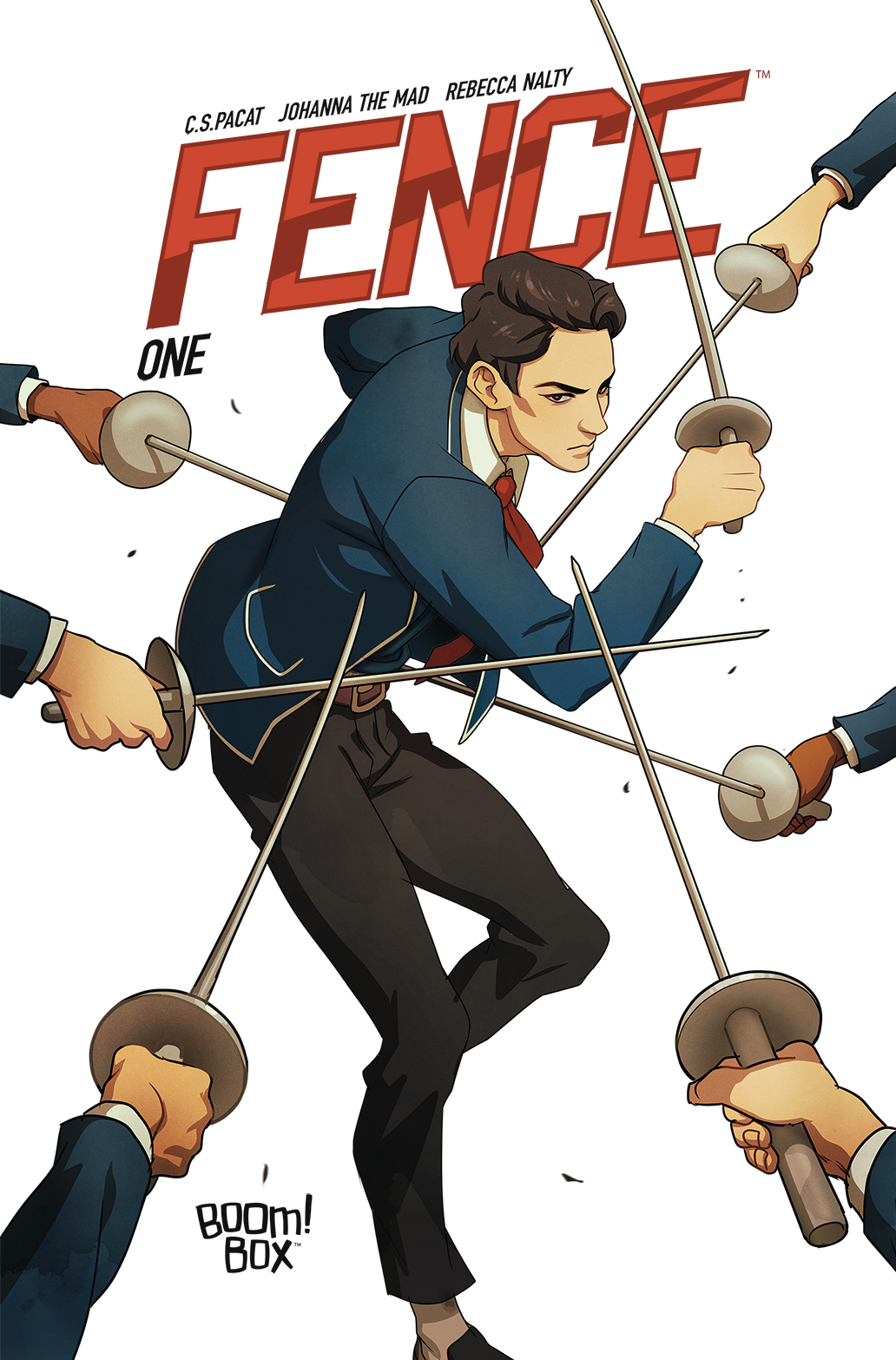
Fence #1 unlocked retailer variant by Shanen Pae